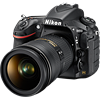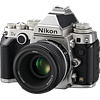Main
Model
Price
Advantages
launch
Announced
Body type
Camera subcategory
Sensor
Effective pixels
Max resolution
Sensor size
Sensor type
Processor
Image ratio w:h
Other resolutions
Sensor photo detectors
Image
ISO
Boosted ISO (minimum)
Boosted ISO (maximum)
White balance presets
Custom white balance
Image stabilization
Uncompressed format
JPEG quality levels
Photography features
Minimum shutter speed
Maximum shutter speed
Aperture priority
Shutter priority
Manual exposure mode
Subject / scene modes
Built-in flash
Flash range
External flash
Flash modes
Continuous drive
Self-timer
Metering modes
Exposure compensation
AE Bracketing
WB Bracketing
Screen / viewfinder
Articulated LCD
Screen size
Screen dots
Touch screen
Screen type
Live view
Viewfinder type
Viewfinder coverage
Viewfinder magnification
Videography features
Resolutions
File Format
Videography notes
Microphone
Speaker
Optics & Focus
Autofocus
Manual focus
Number of focus points
Lens mount
Focal length multiplier
Physical
Weight (inc. batteries)
Dimensions
Environmentally sealed
Battery
Battery details
Battery Life (CIPA)
Storage
Storage types
Connectivity
USB
HDMI
Wireless
Wireless notes
Remote control
Other features
GPS
GPS notes
Orientation sensor
Timelapse recording
Samples
Videos
Summary
The D810 highest resolution of 7360 x 4912 pixels (36 megapixels) is better than the Df maximum resolution of 4928 x 3280 pixels (16 megapixels). The D810 provides more number of focus points than the Df: 51 vs 39. More number of focus points means less risk of losing focus lock during following a moving subject.
The D810 display is better as it has more number of screen dots 1,229,000 in compare to 921,000 dots of the Df screen. The higher dot count display is better for reviewing pictures on your camera. The D810 provides better highest shutter speed - 1/8000 second.
The D810 is produced with built-in flash. The Df battery life is better than the D810 battery life. According to CIPA standards the photographer will be able to take 1400 shots with the Df and only 1200 with the D810. The Df weighs 760g that is 220g lighter than the weight of the D810. The D810 can utilize optional accessory GPS devices. Recording GPS data can be useful if the camera owner is a traveller, to be able to go into the photo metadata and see exactly where a photo was produced.
Taking into account the above-mentioned differences the Nikon D810 will become the best choice. Check the list of the best offers on Amazon.


